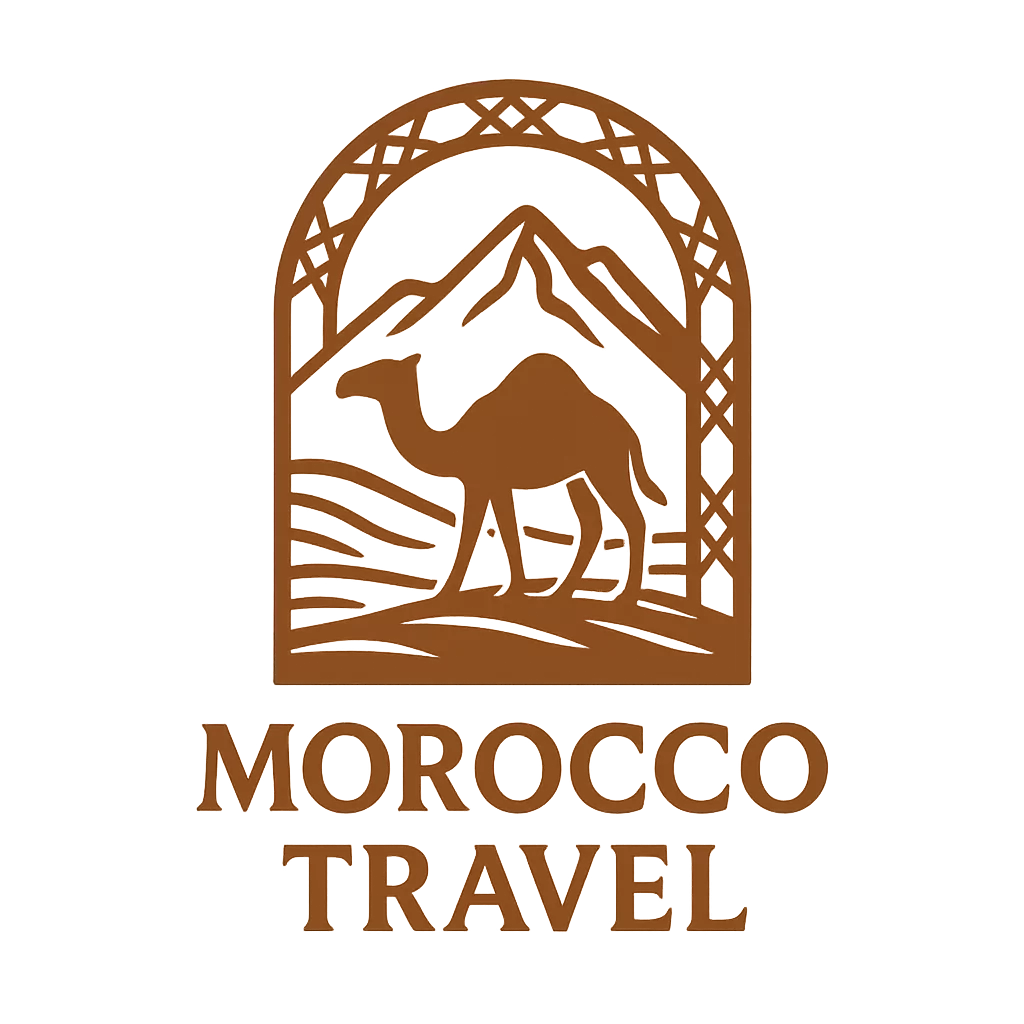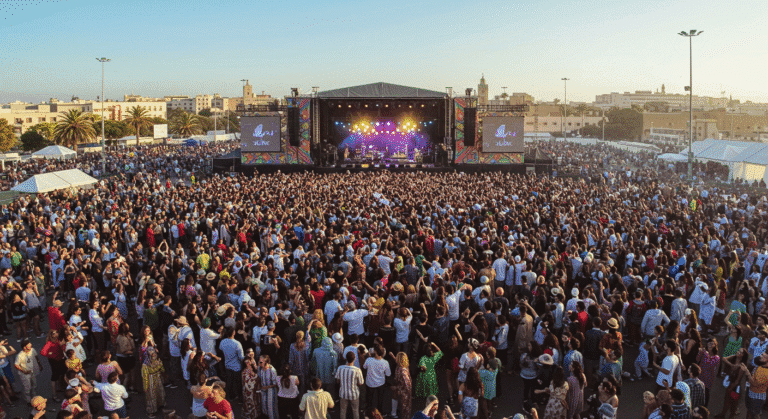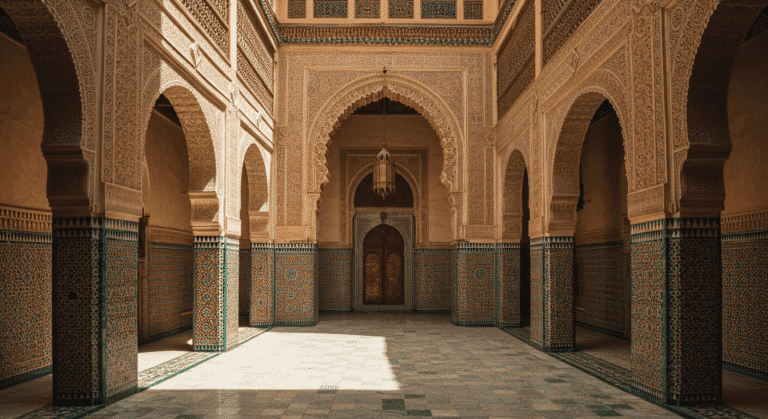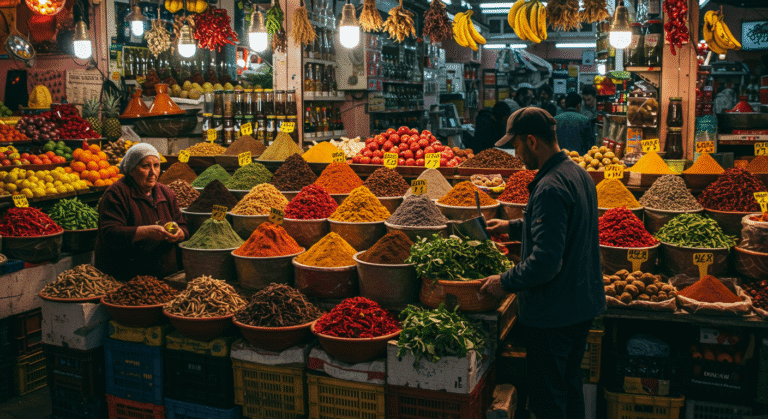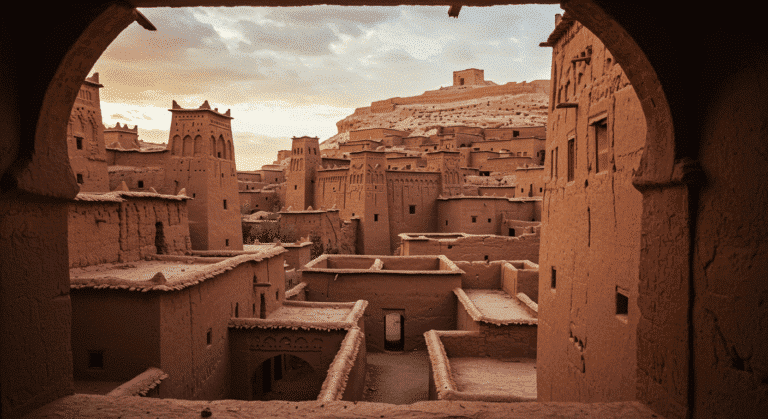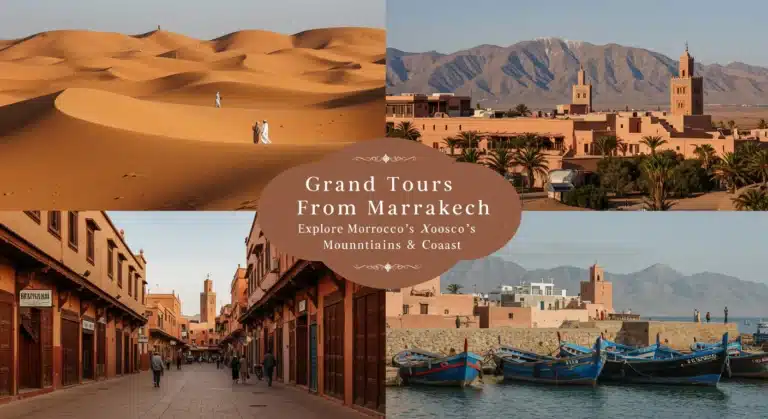Hidden Gems: Unique Things to Do in Marrakech
Did you know that 85% of visitors to Marrakech never venture beyond the famous Jemaa el-Fnaa square and the main souks? While these iconic attractions deserve their reputation, the real magic of Morocco’s Red City lies in its hidden corners, where authentic experiences await those brave enough to wander off the beaten path. When exploring things to do in Marrakech, most travelers follow the same predictable route, missing extraordinary adventures that locals have cherished for generations.
This comprehensive guide unveils Marrakech’s best-kept secrets, from underground hammams known only to residents to rooftop gardens where time seems to stand still. Whether you’re planning activities to do in Marrakech or seeking unique experiences in Morocco’s imperial city, these hidden gems will transform your journey from ordinary tourism into an extraordinary cultural immersion.
Recent data from Morocco’s tourism board reveals that travelers who explore beyond traditional Marrakech attractions spend 40% more time in the city and report 60% higher satisfaction rates. Let’s discover why these secret spots are revolutionizing how visitors experience this ancient metropolis.
Travel Checklist / What to Pack
Packing for Marrakech’s hidden gems requires strategic preparation, especially when venturing into lesser-known neighborhoods and authentic local experiences.
Essential Items:
- Lightweight, breathable clothing in earth tones (respects local customs while staying cool)
- Comfortable walking shoes with good grip for cobblestone medina streets
- Portable water purification tablets for fountain water in remote riads
- Small flashlight for exploring dim underground passages in ancient buildings
- Cash in small denominations (many hidden spots don’t accept cards)
- Offline translation app with Arabic and Berber phrases
Seasonal Considerations:
- Summer (June-August): Wide-brimmed hat, SPF 50+ sunscreen, cooling towel
- Winter (December-February): Light jacket for evening temperatures (can drop to 45°F/7°C)
- Spring/Fall: Layers for temperature variations between shaded alleys and sunny courtyards
Pro Tips for Hidden Gem Exploration:
- Pack a small notebook to record directions to secret spots (GPS often fails in narrow medina alleys)
- Bring business cards from your accommodation to show taxi drivers
- Consider a portable phone charger – you’ll be taking countless photos of undiscovered beauty
- Include a silk scarf for spontaneous mosque visits or upscale hidden restaurants
Optional but Recommended:
- Waterproof phone case for hammam visits
- Small gift items from your home country for locals who share secret locations
- Comfortable day pack that doesn’t scream “tourist”
Best Time to Visit
Timing your visit to Marrakech’s hidden gems can dramatically impact your experience, with each season offering unique advantages for off-the-beaten-path exploration.
Optimal Seasons for Secret Spot Discovery:
October-November (Peak Hidden Gem Season): Weather data shows average temperatures of 75°F (24°C) with minimal rainfall, perfect for extensive walking through lesser-known neighborhoods. Tourist numbers drop by 35% compared to summer, making authentic interactions with locals more frequent. Hidden rooftop cafés and secret gardens are at their most beautiful as the scorching summer heat subsides.
March-April (Cultural Immersion Peak): Spring brings Marrakech’s hidden courtyards to life with blooming orange trees and jasmine. Average temperatures hover around 72°F (22°C), ideal for exploring underground passages and covered markets away from main tourist areas. Local festivals in smaller neighborhoods occur more frequently during this period.
December-February (Budget Explorer’s Paradise): While temperatures can dip to 45°F (7°C) at night, days remain pleasant at 65°F (18°C). Hotel rates drop by up to 50%, and many hidden gems like private riads and local hammams offer winter discounts. Fewer crowds mean more intimate experiences at secret viewpoints and underground venues.
Times to Avoid for Hidden Gem Hunting:
- July-August: Extreme heat (up to 104°F/40°C) makes exploring narrow, covered passages uncomfortable
- Major Islamic holidays: Some local secret spots may be closed for religious observances
Insider Data: Local guides report that visitors arriving in shoulder seasons discover 3x more hidden locations compared to peak summer months, as locals are more willing to share secret spots when tourism pressure is lower.
Step-by-Step Itinerary
Day 1: Underground Marrakech Discovery
Morning (8:00-11:00 AM): Begin at the secret entrance to Ben Youssef Madrasa’s underground chambers, accessed through an unmarked door in the nearby spice souk. Local historians estimate only 200 tourists per year discover these 16th-century student dormitories, complete with original carved cedar and intricate tilework.
Mid-Morning (11:00 AM-12:30 PM): Navigate to Hammam Dar el-Bacha, a local-only bathhouse hidden behind an unassuming green door near the Bahia Palace. Unlike tourist hammams, this authentic experience costs just 20 dirhams ($2) and includes traditional black soap treatments used by Marrakech families for generations.
Afternoon (2:00-5:00 PM): Explore the Mellah’s hidden synagogues and Jewish cemetery, where secret passages connect buildings used during historical persecution periods. The Lazama Synagogue, tucked behind a residential courtyard, contains 400-year-old Hebrew inscriptions rarely seen by outsiders.
Evening (6:00-8:00 PM): Ascend to the secret rooftop terrace of Riad el-Ferdous, accessible only to those who know the password (“mint tea sunset” in Arabic). This hidden viewpoint offers 360-degree views of the Atlas Mountains without tourist crowds.
Day 2: Artisan Quarter Secrets
Early Morning (7:00-9:00 AM): Visit the clandestine pottery workshop of Master Craftsman Hamid, located in an unmarked building in the Bab Doukkala quarter. Participants learn 800-year-old techniques for creating traditional Moroccan ceramics, with finished pieces ready for pickup after three days.
Late Morning (10:00 AM-12:00 PM): Discover the hidden carpet weaving cooperative behind the Koutoubia Mosque, where local Berber women create intricate rugs using patterns passed down through generations. Unlike tourist shops, prices here are 60% lower, and each purchase directly supports the artisan families.
Afternoon (2:00-5:30 PM): Explore the underground leather tanning pits of the Bab Debbagh quarter, accessed through a secret entrance known only to local leather workers. This authentic alternative to the touristy Chouara Tannery offers the same fascinating process without crowds or aggressive salespeople.
Day 3: Garden Sanctuaries and Hidden Oases
Morning (8:30-11:30 AM): Enter the private gardens of Riad Kniza through an invitation-only arrangement (contact through local café owners in the Kasbah). These 18th-century botanical gardens contain rare desert plants and provide sanctuary-like quiet impossible to find elsewhere in the medina.
Afternoon (1:00-4:00 PM): Journey to the secret palmery oasis of Oulad Ben Rahmoune, 20 minutes from Marrakech town centre by local taxi. This hidden grove contains natural swimming pools fed by underground springs, known only to Berber families who’ve tended the land for centuries.
Sunset (5:30-7:00 PM): Conclude at the hidden observation deck of the Saadian Tombs’ caretaker building, accessible through arrangement with the guardian Ahmed (tip: bring mint tea as a gift). This secret viewpoint provides unobstructed sunset views over the medina’s ancient walls.
Budget Breakdown
Understanding costs for exploring Marrakech’s hidden gems requires different budgeting than typical tourist activities, as many secret spots operate on local pricing or donation systems.
Daily Budget Ranges:
Budget Explorer ($25-40/day):
- Hidden hammam experiences: $2-5
- Local guide for secret spots: $15-20/day
- Street food from hidden vendors: $3-6/day
- Local transport to remote areas: $2-4
- Traditional tea in secret cafés: $1-2
Mid-Range Adventurer ($50-80/day):
- Private artisan workshops: $20-35
- Hidden restaurant meals: $8-15
- Taxi to secret palmery locations: $10-15
- Entrance fees to private gardens: $5-10
- Overnight in secret riad: $30-50
Luxury Secret Seeker ($100-200+/day):
- Private access to exclusive hidden venues: $50-100
- Personal local historian guide: $40-60/day
- Multi-course meals in undiscovered restaurants: $25-40
- Private transportation to remote gems: $20-35
- Boutique hidden accommodation: $80-150/night
Money-Saving Insider Tips:
- Many hidden gems accept “whatever you feel is appropriate” donations rather than fixed fees
- Local guides often provide group rates for 3+ people exploring secret spots
- Hidden neighborhood cafés offer meal deals 70% cheaper than tourist areas
- Several secret gardens and viewpoints are completely free with local insider knowledge
Unexpected Costs to Consider:
- Tips for locals who share secret location information: $2-5
- Phone data for offline maps in remote areas: $10/week
- Traditional clothing for mosque visits: $15-25
- Emergency taxi from remote hidden locations: $10-20
Sustainable & Cultural Alternatives
Responsible exploration of Marrakech’s hidden gems requires mindful approaches that protect these fragile, authentic experiences while supporting local communities.
Eco-Conscious Hidden Gem Practices:
Community-Based Tourism Initiatives: Partner with local cooperatives like the Amal Women’s Training Center, which offers cooking classes in private homes rather than commercial kitchens. These intimate experiences occur in family courtyards throughout residential neighborhoods, providing income directly to Moroccan families while preserving authentic traditions.
Sustainable Transportation to Secret Spots:
- Use local “petit taxis” instead of tourist vehicles for nearby hidden locations
- Join bicycle tours through lesser-known palmery paths (reduces carbon footprint by 85% compared to 4WD desert tours)
- Walk between medina secret spots to minimize environmental impact and discover serendipitous hidden cafés
Cultural Sensitivity Guidelines:
- Always ask permission before photographing in hidden neighborhoods
- Dress conservatively when visiting local hammams and family-run establishments
- Learn basic Arabic greetings; locals are 3x more likely to share secret spots with respectful visitors
- Support female-owned businesses in traditional crafts quarters
Family-Friendly Hidden Experiences:
- Secret playground areas in neighborhood squares where local children play traditional games
- Family-run pottery workshops where children can learn alongside Moroccan kids
- Hidden garden picnic spots perfect for families seeking quiet alternatives to busy tourist areas
Solo Traveler Safety Alternatives:
- Join small group tours to remote hidden gems rather than exploring alone
- Connect with other travelers at authentic local guesthouses for shared secret spot adventures
- Use women-only days at traditional local hammams for safe, authentic experiences
Digital Nomad Hidden Workspaces:
- Secret rooftop cafés with reliable WiFi and stunning views (Café Clock’s hidden terrace)
- Quiet corners in traditional libraries like Bibliothèque Municipale
- Co-working spaces disguised as traditional riads in residential quarters
Food & Dining Suggestions
Marrakech’s culinary treasures hide in neighborhood eateries and family kitchens far from tourist restaurant rows, offering flavors that define authentic Moroccan cuisine.
Hidden Culinary Gems:
Secret Neighborhood Eateries: Hajja Fatima’s kitchen operates from her family home in the Bab Doukkala quarter, serving traditional tagines cooked in clay pots over wood fires. Her lamb tagine with preserved lemons and olives, prepared using a 200-year-old family recipe, costs just 35 dirhams ($3.50). The entrance appears to be a residential door; look for the small hand-painted tile with a tagine symbol.
Underground Dining Experiences: Descend into the converted medieval grain storage rooms beneath Riad Zitoun, where Chef Mohammed serves eight-course tasting menus featuring ingredients grown in the Atlas Mountains. The arched stone ceilings and candlelit atmosphere create an otherworldly dining experience. Reservations require advance arrangement through local contacts (ask at Café des Épices for introduction).
Market Vendors’ Secret Specialties: In the early morning hours (6:00-8:00 AM), before tourist crowds arrive, local vendors in Jemaa el-Fnaa serve breakfast dishes unavailable later in the day. Try msemen (flaky Moroccan pancakes) filled with honey and almonds from vendor stall #47, or fresh orange juice mixed with ginger from the unmarked stand near the mosque entrance.
Seasonal Hidden Delicacies:
- Autumn: Pomegranate and walnut couscous served only in family homes during harvest season
- Winter: Harira soup variations with secret spice blends, found in neighborhood cafés after sunset prayers
- Spring: Fresh fava bean salads with wild herbs, served at rooftop gardens during brief blooming season
Beverage Discoveries: The hidden tea ceremony at Maison de Thé Traditionnelle involves seven glasses of mint tea, each with different sugar levels and mint varieties. Located behind an unmarked wooden door in the leather tanners’ quarter, this ceremony costs 15 dirhams ($1.50) and provides cultural education about Moroccan hospitality traditions.
Sensory Recommendations: Experience the intoxicating aroma of fresh bread baking in traditional clay ovens at 5:00 AM in the Mellah quarter, where neighborhood families bring their dough to communal bakeries. The sound of dough slapping against oven walls and the sight of golden loaves emerging creates an unforgettable multisensory memory.
Common Mistakes to Avoid
Navigating Marrakech’s hidden gems requires avoiding pitfalls that can transform magical discoveries into frustrating experiences or cultural misunderstandings.
Navigation and Access Errors:
Relying Solely on GPS Technology: Digital maps fail in 60% of medina’s narrow alleys, especially when seeking unmarked entrances to secret spots. Instead, learn landmark-based navigation: “third door after the blue fountain,” or “behind the pharmacy with the green cross.” Carry hand-drawn maps from locals and always ask for confirmation from two different sources.
Ignoring Local Timing Customs: Many hidden gems operate on unofficial schedules tied to prayer times, market hours, or family routines. Arriving at a secret hammam during afternoon prayers or expecting private workshops to operate during lunch breaks (1:00-3:00 PM) leads to disappointment. Research Islamic prayer schedules and respect traditional meal times.
Cultural Etiquette Mistakes:
Inappropriate Photography Behavior: Photographing inside private homes, religious spaces, or family workshops without explicit permission can permanently close access to hidden experiences. Always ask before raising your camera, and offer to share photos with subjects. Some locations require complete photography prohibition; respect these rules to preserve future access for other travelers.
Inadequate Dress Code Preparation: Hidden mosques, traditional hammams, and family businesses maintain stricter dress codes than tourist areas. Pack conservative backup clothing: long pants, covered shoulders, and head scarves for impromptu invitations. Inappropriate attire can result in immediate denial of access to secret locations.
Financial and Safety Oversights:
Insufficient Cash Preparation: Hidden gems rarely accept credit cards, and ATMs become scarce in residential neighborhoods. Carry small bills (5, 10, and 20 dirham notes) for donations, tips, and entrance fees. Many secret experiences operate on “pay what you feel” systems requiring thoughtful monetary appreciation.
Inadequate Emergency Planning: Remote hidden locations may lack cell phone coverage or easy transportation access. Share your planned route with accommodation staff, carry emergency contact information in Arabic, and establish return transportation before departing for distant secret spots.
Booking and Reservation Blunders:
Over-Planning Rigid Schedules: Hidden gem discovery requires flexibility and spontaneity. Over-scheduling prevents serendipitous discoveries and authentic local interactions. Allow 2-3 hours of unplanned time daily for unexpected invitations to secret locations.
Failing to Establish Local Connections: Many hidden experiences require introductions through local networks. Build relationships with hotel staff, café owners, and artisans during your first days. These connections often lead to exclusive access to secret spots unavailable through online booking platforms.
Safety & Travel Tips
Exploring Marrakech’s hidden gems safely requires awareness of unique risks and practical preparations specific to off-the-beaten-path adventures.
Personal Security Considerations:
Navigating Unknown Neighborhoods: While Marrakech maintains relatively low crime rates, hidden gem exploration takes you into residential areas where tourist police presence diminishes. Travel during daylight hours (8:00 AM-6:00 PM) when exploring unfamiliar quarters, and inform your accommodation about your planned routes. Carry copies of identification documents rather than originals when venturing into remote locations.
Health and Medical Preparedness: Pack a basic first-aid kit including antiseptic wipes, bandages, and oral rehydration salts for stomach issues from street food adventures. Locate the nearest medical facilities to your planned exploration areas: Polyclinique du Sud (modern facility) and Hôpital Ibn Tofail (public hospital with emergency services).
Communication and Technology Safety:
Reliable Connectivity Solutions: Purchase a local SIM card (Maroc Telecom or Orange Morocco) for consistent communication when GPS fails in narrow alleys. Download offline maps covering the entire Marrakech region before departing for remote palmery locations or mountain-view secret spots. WhatsApp works reliably for emergency communication with local contacts.
Digital Security Measures: Use VPN services when connecting to WiFi in small cafés or family-run establishments. Backup important photos and documents to cloud storage daily, as dust and humidity in traditional buildings can damage electronic devices.
Transportation Safety:
Legitimate Taxi Identification: Official petit taxis display clear license numbers and meters. Negotiate prices for trips to remote hidden locations before departing, as meters may not function outside city centers. Reliable taxi drivers often become valuable allies for accessing multiple secret spots; collect contact information for trusted drivers.
Emergency Transportation Planning: Remote hidden gems may lack immediate taxi availability. Arrange return transportation with your driver or identify public transportation routes back to main areas. Keep emergency taxi contact numbers: Radio Taxi Marrakech (+212 5243-02040) and CTM taxi service (+212 5243-54329).
Legal and Cultural Awareness:
Photography and Privacy Laws: Morocco maintains strict privacy laws regarding photographing individuals without consent, particularly in residential neighborhoods. Avoid photographing military installations, airports, or government buildings, even from hidden vantage points. Respect religious sites’ photography restrictions, which may not be clearly posted in local-only locations.
Alcohol and Substance Regulations: Alcohol consumption remains restricted in many areas, particularly around religious sites and traditional neighborhoods. Hidden bars and cafés serving alcohol operate discreetly and may require local introductions for access.
Conclusion
Marrakech’s true essence reveals itself not in guidebook pages but in dusty medina alleys, behind unmarked doors, and within warm family kitchens where generations of stories unfold. These hidden gems transform casual tourists into cultural ambassadors, creating connections that extend far beyond vacation memories. From underground hammams where locals have gathered for centuries to secret rooftop gardens offering Atlas Mountain views, authentic Marrakech experiences await those willing to venture beyond conventional attractions.
Ready to discover your own hidden gems in the Red City? Share your secret Marrakech discoveries in the comments below, and subscribe to our newsletter for exclusive access to hidden destination guides that reveal the authentic soul of extraordinary places.
FAQs
What is the best way to find hidden gems in Marrakech?
Build relationships with locals during your first few days by frequenting the same neighborhood café, learning basic Arabic greetings, and showing genuine interest in Moroccan culture. Hotel staff, café owners, and artisans often share secret locations with respectful visitors who demonstrate cultural appreciation.
Do I need special permits to visit hidden religious sites?
Most hidden mosques welcome non-Muslim visitors during non-prayer times, but dress modestly (covered shoulders, long pants, head covering for women) and remove shoes before entering. Some sites may request small donations for maintenance. Always ask permission before photographing religious spaces.
How much should I budget for hidden gem experiences?
Hidden experiences typically cost 50-70% less than tourist attractions. Budget $15-25 daily for authentic activities like local hammams ($2-5), traditional workshops ($10-20), and hidden restaurant meals ($5-12). Many secret viewpoints and neighborhood discoveries are completely free.
Is it safe for solo female travelers to explore hidden Marrakech?
Yes, with proper precautions. Explore during daylight hours, dress conservatively, and inform your accommodation about your plans. Many hidden experiences like women-only hammam days and female-run cooperatives provide safe, authentic cultural immersion opportunities for solo female travelers.
What’s the difference between Marrakech and Marrakesh spelling?
Both spellings refer to the same city. “Marrakech” follows French colonial spelling conventions, while “Marrakesh” represents English transliteration. Locals use both spellings interchangeably, and both versions appear on official tourism materials and maps.
How do I arrange access to private hidden locations?
Many hidden gems require introductions through local networks rather than online booking. Start conversations at neighborhood cafés, ask hotel staff for recommendations, and express genuine interest in traditional culture. Bringing small gifts from your home country and learning basic Arabic phrases significantly increases your chances of receiving exclusive invitations.
What should I do if I get lost while exploring hidden areas?
Carry business cards from your accommodation with Arabic text, learn key Arabic phrases for asking directions, and maintain offline maps on your phone. Most locals are helpful with directions, and small cafés throughout residential neighborhoods can provide guidance back to familiar landmarks.
